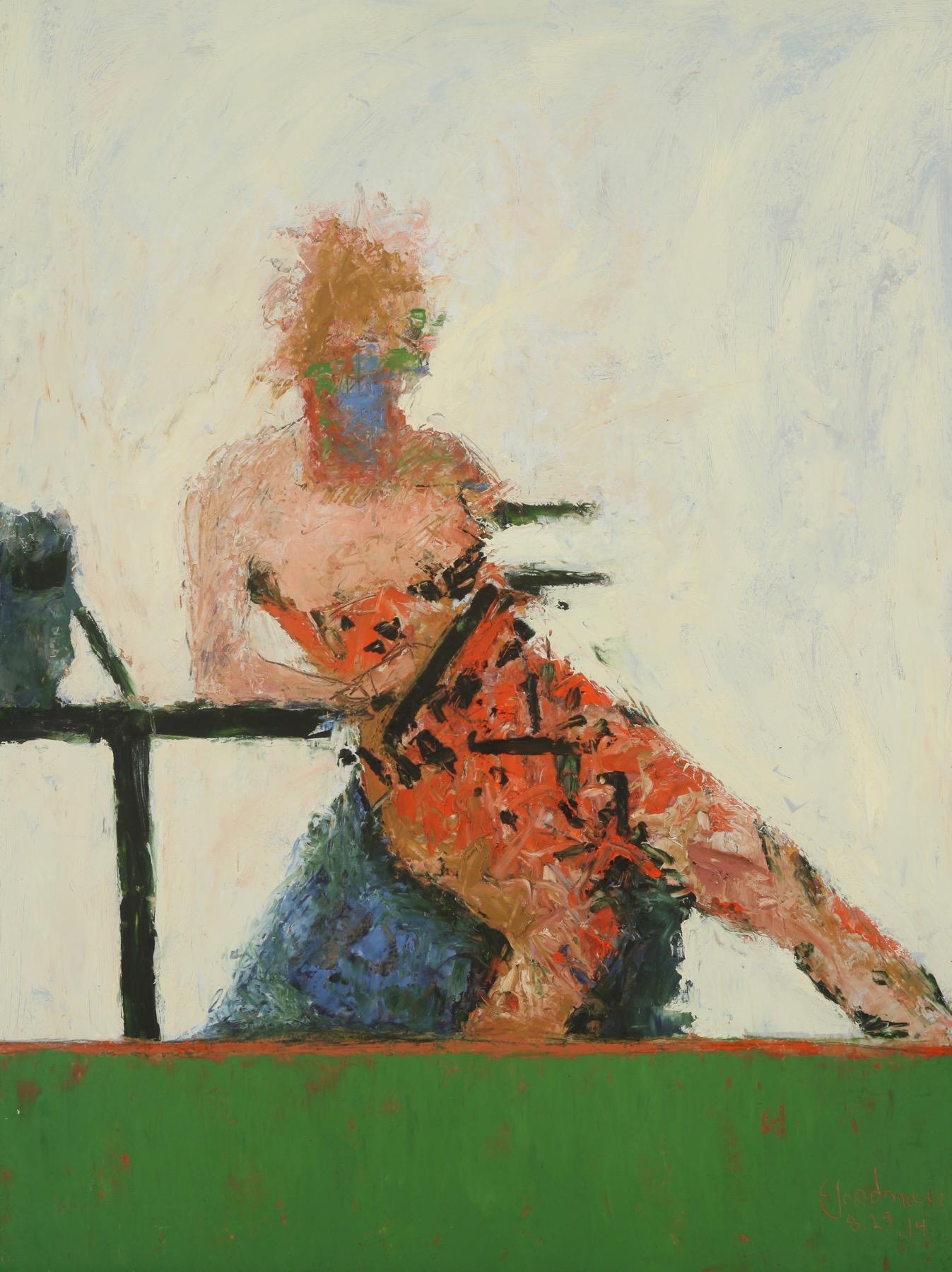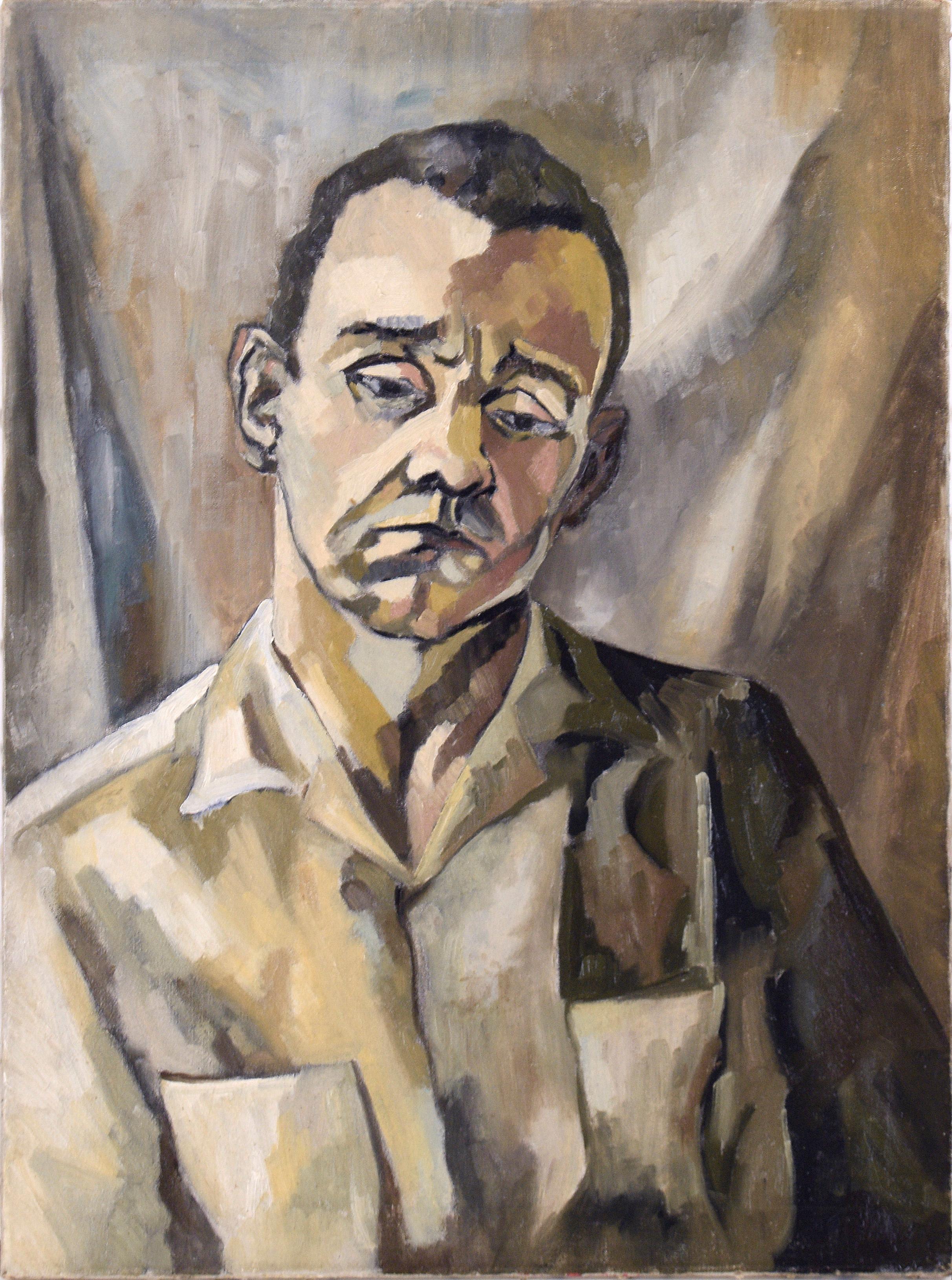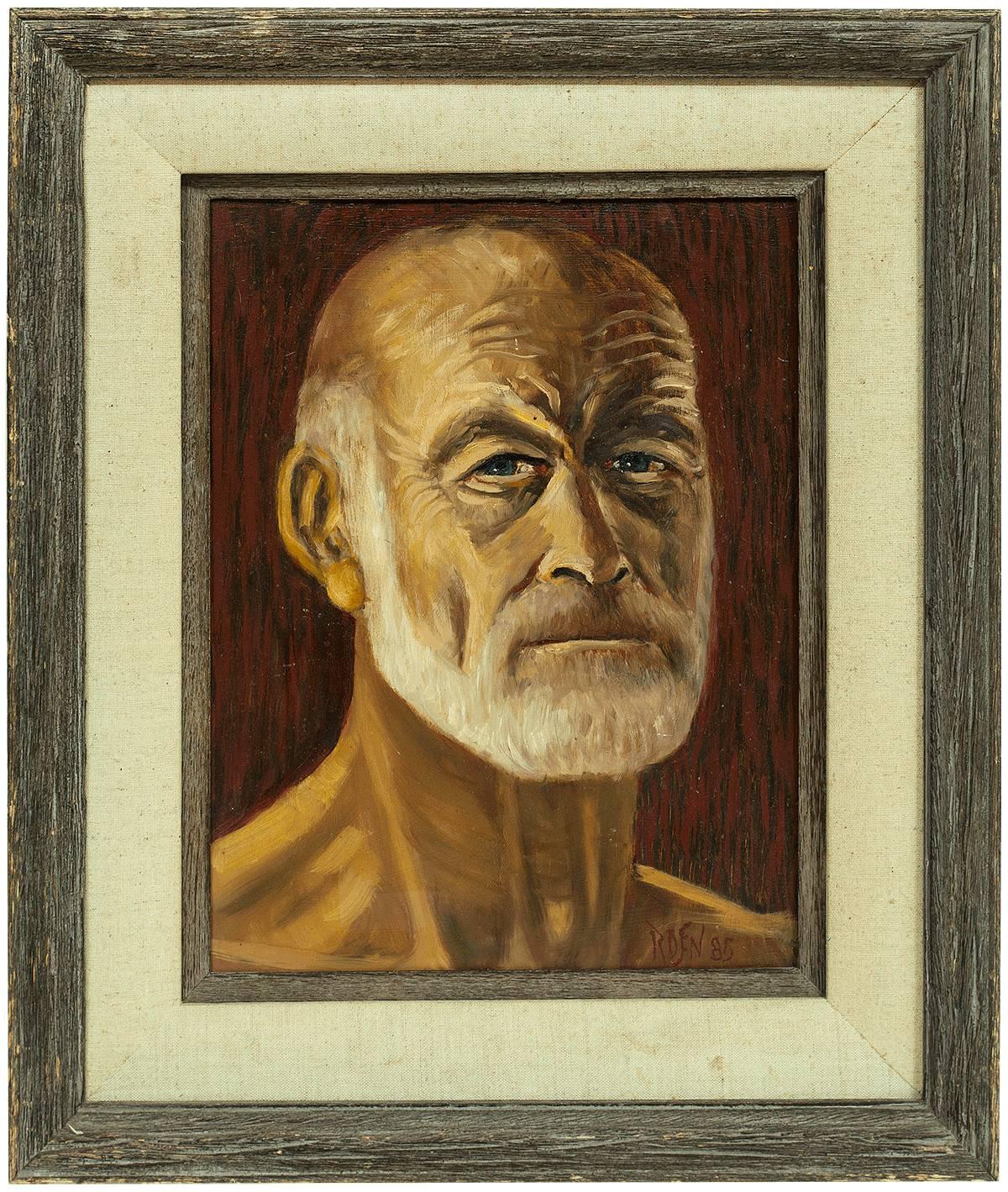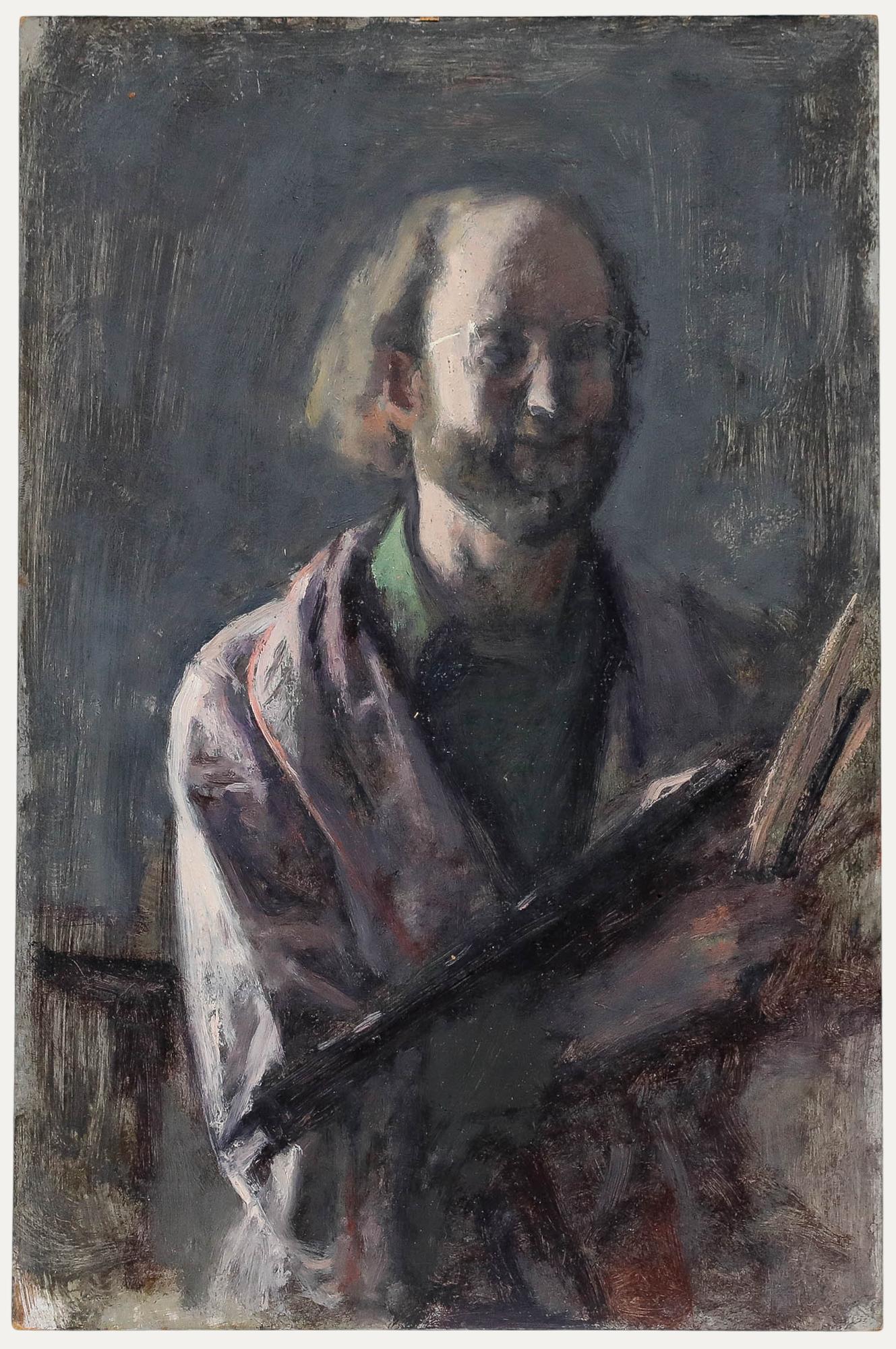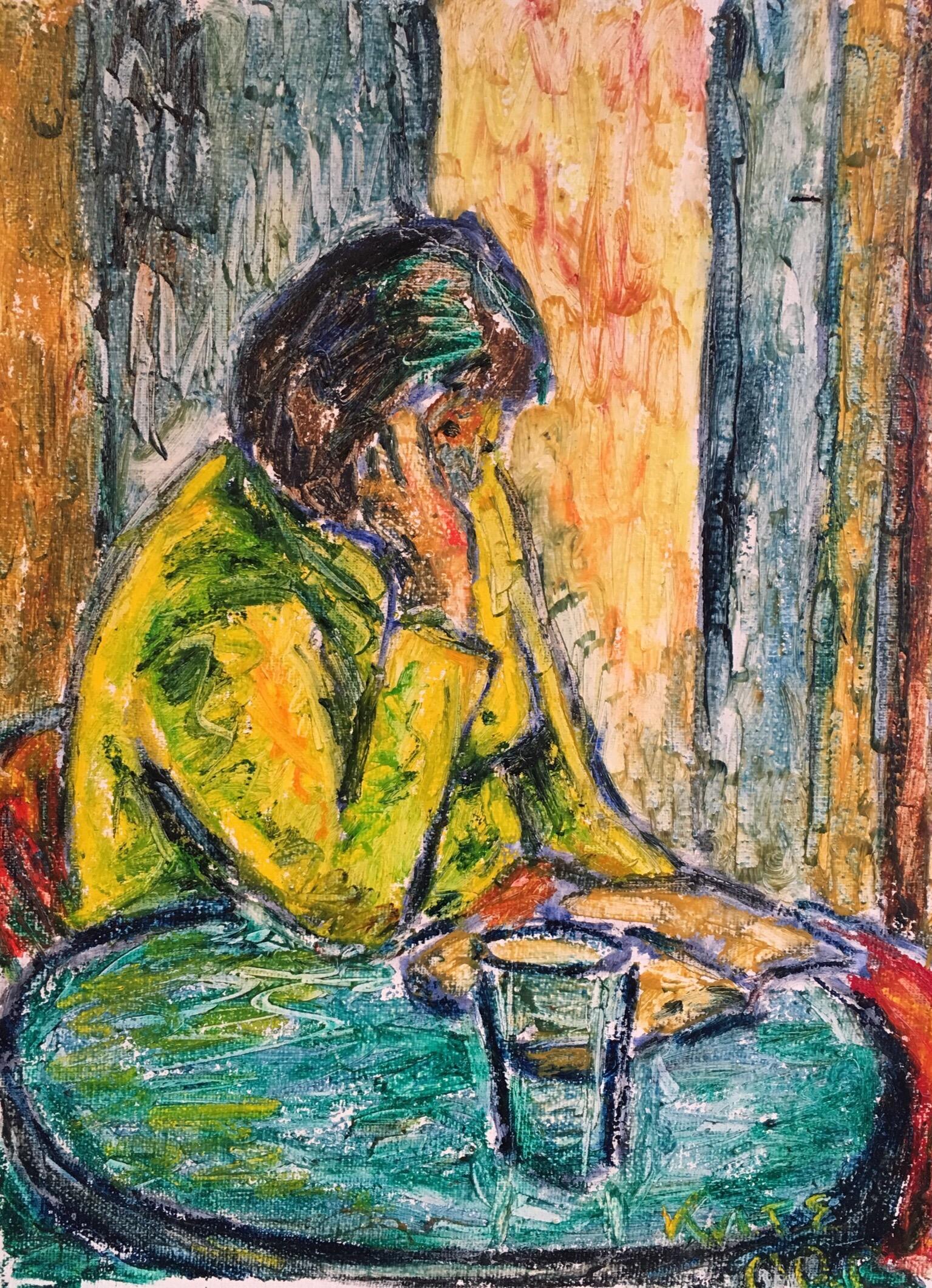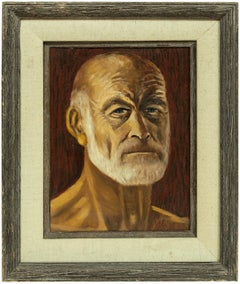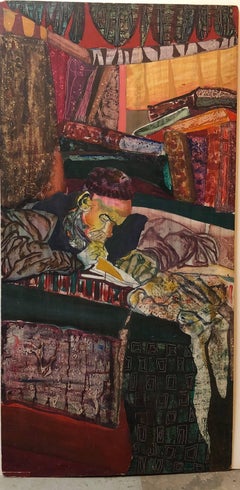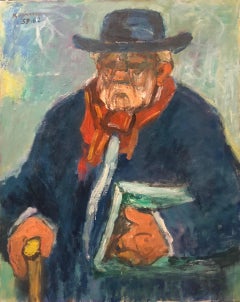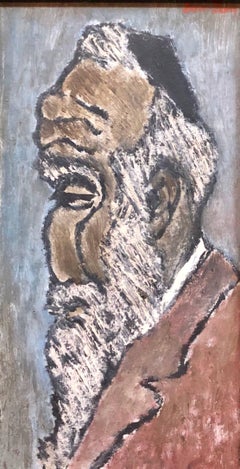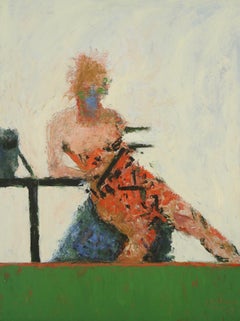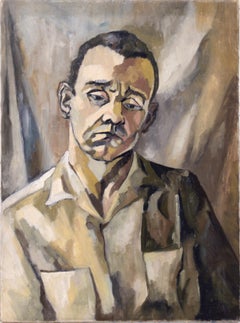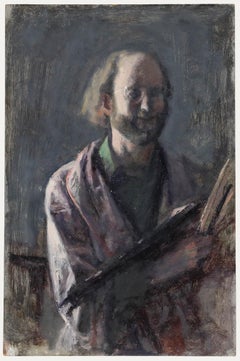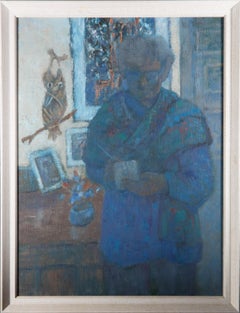Items Similar to Middle Age Aint That Bad. (Retiree Reading a Book)
Want more images or videos?
Request additional images or videos from the seller
1 of 5
David Rosen (b.1912)Middle Age Aint That Bad. (Retiree Reading a Book)
$1,200
£934.28
€1,062.55
CA$1,726.51
A$1,896.50
CHF 991.12
MX$22,617.32
NOK 12,550.28
SEK 11,691.65
DKK 7,939.84
About the Item
DAVID ROSEN
Toronto, Canada, b. 1912, d. 2004
Painter David Rosen emerged onto the art scene while the country was wrought with unimaginable economic turmoil. Like most other Americans, the Great Depression pummeled artists financially, leaving them destitute and unable to find even conventional labor work. However, in the midst of such devastation, the government implemented arts projects which strove to achieve employment for these artists. The program arose during a memorable era for art and funded the careers of several renowned artists, including Jackson Pollack, Arshile Gorky, and Lee Krasner before they found success. In 1936, Rosen himself joined the program and quickly accompanied his contemporaries in building the next movement of modern art, Abstract Expressionism.
Born in 1912, Rosen grew up in Toronto, Canada before pursuing arts in the United States. Upon arriving, Rosen settled in New York City and attended the Cooper Union Art school in 1930. While participating in the Federal Arts Project, he worked for the program's mural department until 1941. As well, he worked with an artist collective, Siqueiros Art Workshop. There, Rosen met fellow FAP artist Jackson Pollack, and together, with artist Phillip Guston, they experimented with new painting techniques and mediums. Art movements are often reactions to the popular styles that precede them, and Abstract Expressionism applied a new and exciting method to Modern Art. Gradually, artists began to break away from an overly-studied, academic approach to painting and liberated their technique. During these workshops, Rosen was introduced to Pollack's groundbreaking "drip painting" before it changed the art world.
As America became involved in World War II, the Federal Arts Project wound down, officially ending in 1942. Around this time, Rosen enlisted as a Merchant Seaman with the U.S Merchant Marines. During this time, he traveled to North Africa and Italy before concluding his service and moving to California where, in 1945, he devoted his full attention to building an art career. Within a couple of years, he landed a major exhibition at the Los Angeles County Museum of Art in 1947, and his first one-man show, which opened to rave reviews, was held at Hollywood's Contemporary Art Gallery. The exhibition’s success led to mural commissions from Palm Springs' Hotel del Tahquitz, and he scored more solo shows at West Hollywood's Chabot Gallery.
The early 1950s brought a surge of recognition for Rosen's career, and while his work was certainly still influenced by Abstract Expression, his painting style included elements of Surrealism, Figurative Art, and Cubism. Like his colleague Jackson Pollack, Rosen produced work inspired by drip painting; however, rather than splattering, his drips were the natural flow marks from painting freely without regard for "mistakes." Throughout Rosen's long career, he would acquire techniques from vastly different art styles which made for a varied, eclectic catalog of work.
Rosen continued to build his California art career and settled at a Laguna Beach art colony in 1958. There, he entered his work in the Laguna Beach Festival of Arts and was the first painter to contribute Abstract Art to the event. Rosen would participate in the festival for the next fifteen years. A year after his move, in 1959, Rosen opened his first studio gallery and began a 12-year collaboration with the Laguna Playhouse. For the next two decades, Rosen participated in 17 art exhibitions and 20 solo shows, and received considerable critical praise.
Rosen's themes were as varied as his evolving painting style, and one of his themes focused on classic characters like Shakespeare's Hamlet. Rosen's close-up portraits of historical and literary figures, illustrated by the piece To Be or Not to Be: Soliloquy From Hamlet, capture the essence of the characters while remaining loose with the painting and even adding a slight cartoon feel. His ongoing Hamlet series, as a complete collection, makes an impact with the diversity of technique. Unlike the loose style of some of his works, the painting Madaam... that he is mad is true is influenced by the structure of Cubism, the flat dimensions of Byzantine Art, and his utilization of mixed media.
After Rosen's death in 2004, the Laguna Beach Festival of Arts sponsored an exhibition of his Hamlet paintings at the Wells Fargo Building gallery. Throughout Rosen's career, he amassed a great deal of critical, industry, and public praise for his work. His beloved town of Laguna Beach bestowed numerous awards that include the Laguna Beach Annual Art Gallery Award and Orange County's Annual Exhibit Award. Rosen's work flourished in California, and he received recognition from the San Diego County Fair, Los Angeles' Miracle Mile Annual Show, and California's Museum of History and Art which, in 1993, presented a 50-year retrospective of his work.
- Creator:David Rosen (b.1912) (1912 - 2004, Canadian)
- Dimensions:Height: 41.5 in (105.41 cm)Width: 32.25 in (81.92 cm)
- Medium:
- Movement & Style:
- Period:
- Condition:minor puncture lower left. needs small repair.
- Gallery Location:Surfside, FL
- Reference Number:1stDibs: LU38211823582
About the Seller
4.9
Platinum Seller
Premium sellers with a 4.7+ rating and 24-hour response times
Established in 1995
1stDibs seller since 2014
1,837 sales on 1stDibs
Typical response time: 1 hour
- ShippingRetrieving quote...Shipping from: Surfside, FL
- Return Policy
More From This Seller
View AllSelf Portrait, Modernist Portrait of the Artist
By David Rosen (b.1912)
Located in Surfside, FL
Genre: Modern
Subject: Portrait
Medium: Oil
Surface: Board
Country: United States
Dimensions: 16" x 12"
Dimensions w/Frame: 23" x 18"
Painter David Rosen emerged onto the art scene...
Category
1980s Modern Portrait Paintings
Materials
Oil
Mid Century Modernist Judaica Rabbi Scribe Painting Outsider Art
By Paul Shimon
Located in Surfside, FL
This is a 2 sided painting with a torn paper collage on the second side.
Born in New York, Paul Shimon (1919 - 2011) was both an accomplished artist and composer.
Considered by som...
Category
Late 20th Century American Modern Figurative Drawings and Watercolors
Materials
Mixed Media
Portrait of a Gentleman, Large Modernist Oil Painting
By Benjamin Kopman
Located in Surfside, FL
BENJAMIN KOPMAN (1887 - 1965)
Painter, Illustrator and printmaker Benjamin Kopman was born in Vitebsk, Russia and emigrated to the United States with his family in 1903. It was a cen...
Category
Mid-20th Century Expressionist Portrait Paintings
Materials
Canvas, Oil
Modernist Judaica Oil Painting "Old Jew" Jewish Rabbi at Prayer
By Ben-Zion Weinman
Located in Surfside, FL
An oil on board Judaic painting by modern artist Ben-Zion Weinman. It depicts a portrait in profile of an old Jew. The work is signed "Ben-Zion".
Born in 1897, Ben-Zion Weinman celebrated his European Jewish heritage in his visual works as a sculptor, painter, and printmaker. Influenced by Spinoza, Knut Hamsun, and Wladyslaw Reymont, as well as Hebrew literature, Ben-Zion wrote poetry and essays that, like his visual work, attempt to reveal the deep “connection between man and the divine, and between man and earth.”
An emigrant from the Ukraine, he came to the US in 1920. He wrote fairy tales and poems in Hebrew under the name Benzion Weinman, but when he began painting he dropped his last name and hyphenated his first, saying an artist needed only one name.
Ben-Zion was a founding member of “The Ten: An Independent Group” The Ten” a 1930’s avant...
Category
1940s American Modern Figurative Paintings
Materials
Oil, Board
Oil Painting by Well Known Cartoonist and Illustrator Upper East Side, Manhattan
By Sandy Huffaker
Located in Surfside, FL
An Upper East Side of Manhattan New York city scene of bald guy reading newspaper on bench with East River and tugboat in background.
The 1970s were the “glory days,” Huffaker says, for himself and a stable of talented illustrators whose work routinely found itself on the covers of the nation’s premier newsmagazines and in the pages of The New York Times. For the better part of that decade, Huffaker was among an elite breed of commercial artists—his hero and fellow Southerner Jack Davis, the legendary Mad Magazine illustrator, among them—working during a remarkable period when art directors routinely turned to illustration to give comic relief to the country’s deeply serious and dark problems. From civil rights and the women’s movement to Vietnam and Watergate, the gas crisis and inflation to the rise of Jimmy Carter, Huffaker mined a deep well of material ripe for his brand of visual wit and caustic satire. He sent his portfolio to children's book illustrator Maurice Sendak, the legendary “Where The Wild Things Are” illustrator to gauge his prospects, and when Sendak replied, “C’mon up, you’ll do all right,”
SELECT HONORS:
2 Page-One Awards (from the New York Newspaper Guild), for work in Fortune Magazine and Sports Illustrated.
Nominated 3 times for Cartoonist-of-the-Year by the National Cartoonists Society (illustration category).
Desi Award of Excellence (Graphic Design Magazine).
20 Award of Merit citations from the Society of Illustrators.
One-man show, Society of Illustrators.
Illustrators 22 - annual national exhibition for the Society of Illustrators.
SELECT MAGAZINE COVERS
Time Magazine (6),
Sports Illustrated (2),
Business Week (12),
Forbes,
Saturday Review,
New York Times Sunday Magazine,
The New Republic,
Family Weekly,
Madison Avenue,
New York Daily News Sunday Magazine (2),
Junior Scholastic,
ACLU,
The Nation , and more
EDUCATION BA, University of Alabama. Attended Pratt Graphic Center and The Art Students League, New York City.
BOOKS WRITTEN AND ILLUSTRATED The Dispensible Man (M. Evans and Co.) and The Bald Book (M. Evans and Co.) BOOKS ILLUSTRATED White Is (Grove Press), The Begatting of a President (Ballantine Books), The Biggest Sneeze (Harper-Collins), H. Phillip Birdsong's ESP (Young Scott Books), Kids Letters to President Reagan (M. Evans), The Worlds Greatest Left-Handers (M. Evans), Does My Room Come Alive at Night (HarperCollins), The Man With Big Ears (HarperCollins), Jake Snake's Race (HarperCollins), and more
POLITICAL CARTOONING Political cartoonist at The News and Obsever in Raleigh, NC and syndicated during the early 70's. Today, syndicated in 750 publications 3-times a week with Cagle Cartoons.
FINE ART SHOWS Allied Artists of America, Salmagundi Club, Phillips Mill Annual (honorable mention), New Hope Shad Festival (grand Prize), Hunter Museum in Chattanooga ( one -man career retrospective), Santa Fe public library (one--man), Rosenfeld Gallery (Philadelphia), Potter...
Category
20th Century American Modern Figurative Paintings
Materials
Canvas, Oil
Vintage 1950s Israeli Oil Painting, Signed in Hebrew Kibbutz Worker Reading
Located in Surfside, FL
Murray S. Greenfield Art Gallery (label on verso).
Genre: Modern
Subject: People
Medium: Oil
Surface: Board
Country: Israel
Dimensions: 9 1/2" x 13"
Dimensions w/Frame:16.75" x 20.25"
Category
Mid-20th Century Modern Figurative Paintings
Materials
Oil, Board
You May Also Like
Reading Figure No. 1, 2014
By John Goodman
Located in Burlingame, CA
'Reading Figure No. 1, 2014' by John Goodman. The artwork is 40 x 30 inches. Artist signed, dated in ink verso. Condition is excellent, as new.
Goodman’s signature restrained palet...
Category
21st Century and Contemporary Contemporary Figurative Paintings
Materials
Oil, Wood Panel
Mid-Century Modern Man - Portrait in Oil on Canvas
Located in Soquel, CA
Subtle and moody portrait of a Pensive man by Joan Tidwell (American, 1930-2002). The sitter in the portrait is a middle-aged man looking slightly downwards, wearing a collared shirt. This piece is completed in a tan and green palette, creating a somber feeling. Of particular note are the confident, thick brushstrokes - each one is well-placed in the modernist style. Similar in some ways to Picasso's portraits.
Signed "Joan Tidwell" on verso
Unframed.
Canvas size: 30"H x 22"W
oan Gay Tidwell (American, 1930-2002) was born and raised in Hollywood, CA, where she had some success as a child actor. Later, she graduated Magna Cum Laude from the University of Washington with a Master's Degree in English Literature and Drama. Tidwell moved to the Bay...
Category
1960s American Modern Portrait Paintings
Materials
Canvas, Oil
George Weissbort (1928-2013) - 20th Century Oil, The Artist At Work
By George Weissbort
Located in Corsham, GB
Unsigned. On board.
Category
20th Century Portrait Paintings
Materials
Oil
Barbara Doyle (b.1917) - 20th Century Oil, Taking Notes
Located in Corsham, GB
A delightful oil painting by the artist Barbara Doyle, depicting an interior scene with a lady taking notes. Unsigned. Presented in a distressed off-white contemporary frame. On board.
Category
21st Century and Contemporary Portrait Paintings
Materials
Oil
$369 Sale Price
20% Off
Lost in a Book, Surrealist Impressionist Oil Painting, Signed
By Kate Orr
Located in Cirencester, Gloucestershire
Lost in a Book, Surrealist Impressionist Oil Painting, Signed
By British artist, Kate Orr, late 20th Century
Inscribed into the paint by the artist on the lower right hand corner
Sig...
Category
Late 20th Century Impressionist Abstract Paintings
Materials
Oil
$650 Sale Price
30% Off
A reading one - XXI century, Contemporary Figurative Oil Painting, Colorful
By Monika Rossa
Located in Warsaw, PL
MONIKA ROSSA
studied painting at the University of Arizona, in the Ecole des Beaux Arts in Paris and at the Escuela de Diseno in Barcelona. She practices drawing and easel painting....
Category
21st Century and Contemporary Contemporary Figurative Paintings
Materials
Canvas, Oil
More Ways To Browse
David Booker
After 50 Years Of Surrealism
Book Reading Painting
Black Baroque Frame
Boxing Painting
Christ Oil Painting
Girl With Flowers
Paul Louis Bolot
Rod Stewart
Thomas Eakins
Antique Christian Painting
Circus Oil Painting
Igor Volkov
Painting Bathing
Peter Max Original
Seville Spain
Colliers Magazine
Insect Painting
